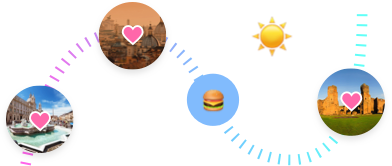



Pesto is one of the world's great and most versatile sauces, and making it is quick and dirty. It is a classic on pasta, but it also makes a superb spread on toast for a fresh tomato sandwich, a scoop into any spaghetti sauce brings it to life and adds depth, and toss some in with potatoes and go straight to heaven; in fact, one of the doubts about Pesto Genovese refers to the serving suggestion. Even in Liguria, in fact, this great topping is often mixed with potatoes and green beans. The original recipe does not include these ingredients, but we can consider them as an alternative way to enrich pesto. Potatoes are boiled with pasta, in order to obtain a higher amount of starches.
Pesto Alla Genovese is D.O.P.-protected, meaning that in Italy and Europe, only sauces made in this precise way, and with these ingredients, can even call themselves pesto Genovese. The ingredients must include D.O.P. basil from Genoa, for example, because the soil and climate in that particular area give the basil a flavor that’s impossible to replicate elsewhere. Pesto Genovese is subjected to a specific Regulation, which protects the production and the selling of this topping, defending it from the imitations. The Regulation controls the choice and the percentage of the ingredients, the area of production and the working methods.
It is not simple to identify exactly its origins, but we can say that it is a very ancient product. The first evidence, in fact, dates back to the Ancient Latins age, when the poet Virgilio, in its Appendix Vergiliana, refers to a paste made with cheese, pine nuts, oil, salt and aromatic herbs, called “momentum”. Even in the Middle Age, there are some considerations about the ancestors of pesto, which in this period was called “agliata”.